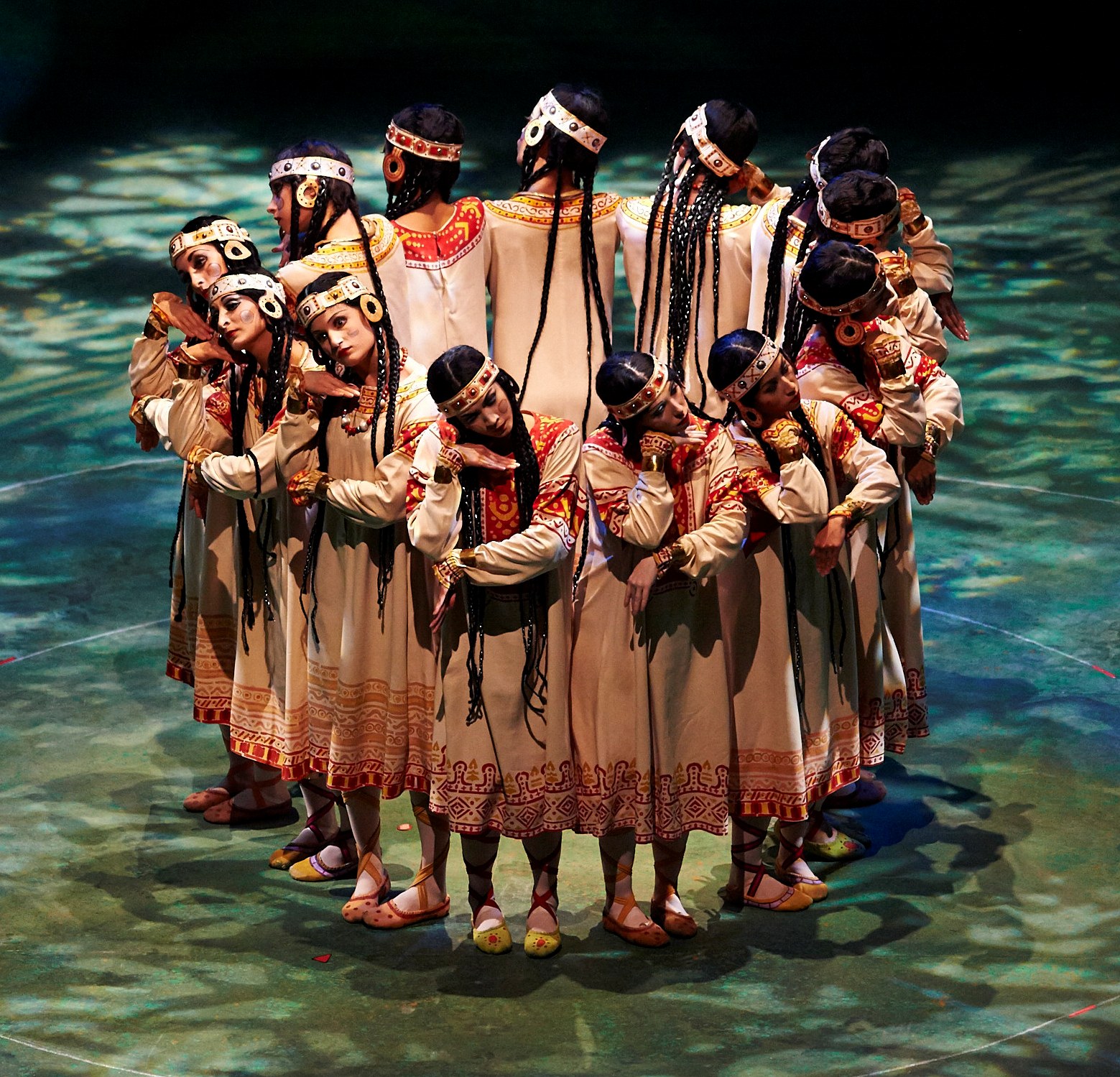CHICAGO—I suspect the public’s reaction to the premiere of Le Sacre du Printemps in Paris was probably similar to our reaction to Miley Cyrus twerking on the VMAs.
Private dismay, followed by public outcry on Facebook.
Ok, so maybe the 1913 crowd didn’t have Facebook, but the audience was so shocked by what they saw that by the end they were either standing up and shouting at the dancers, punching each other, or had already left. Le Sacre was not what anyone expected or wanted to see during a night out at the ballet, any more than we wanted to see Miley’s plastic panties.
…and yet, 100 years later, we are still talking about it. So I’m thinking Sergei Diaghilev, Vaslav Nijinsky, and their Ballets Russes must have done something right.
Though Joffrey’s 13-14 season opener “Russian Masters” featured a great smattering of dances, let’s face it: this was all about Le Sacre du Printemps (The Rite of Spring). I’ve written about The Rite before – this is my third this year, which is appropriate for the 100th anniversary of its premiere in Paris. In the 70’s, Robert Joffrey and Millicent Hodson painstakingly recreated Nijinsky’s original choreography, which had long-since been abandoned. In doing so, we see clear evidence of the evolution of ballet into recognizable modern dance techniques (most notably that of Martha Graham… my fellow writers and I theorized in the lobby of the Auditorium Theatre that Nijinsky and Graham must have been drinking buddies…).
History lesson aside, The Rite is pretty hard to comment on. I wondered what the dance writers of 1913 must have said about the piece. Too repetitive? Hard to watch? Steeped in a Pagan Ritual that I don’t understand? WTF? The thing is, nostalgia wasn’t the only reason I loved the piece. I loved the treatment of Stravinsky’s often hard-to-listen-to music. I loved the total abandonment of ballet technique, stereotyped gender roles, and typical ballet subject matter. I loved the staging, gestural movements, and athleticism. I just – well – I just loved it. The fact that it’s such a pivotal part of dance history makes it all the better.
So there was some other stuff on the program too, but again, for me (with all due respect to Mr. Balanchine and Mr. Possokhov), the real Russian Master here was Le Sacre du Printemps. I did enjoy the opener: Balanchine’s simple and elegant Allegro Brillante. Its bare trappings showed off the pure technique of the dancers, which I assume is what Balanchine himself would have wanted. In fact, I’d bet he would have rather had it in leotards and tights than the pretty flowing skirts and waistcoats the dancers wore. There might have been a time (1956, for example) when this piece was edgy and exciting. There were random moments of contemporary flare: a turned in knee here, some intricate partnering tactics there), but put up against the contemporary works of Yuri Possokhov they seemed super “trad” to me (not, necessarily in a bad way).

Possokhov’s Bells employed the same tactic as Allegro Brillante, but 50 years later. Though mostly classical in its presentation, there were some awkward moments that seemed to be thrown in to add an element of weird. A snap of the fingers, karate chop, and shaking off of the leg were out of place and kind of off-putting. The many sections of Bells ran together for me, but the dancers’ emotions flipped back and forth between tragically emo and totally disinterested. The best part of Bells was the absolutely brilliant performance of Rachmaninoff’s piano score by Mungunchimeg Buriad and Kuang-Hao Huang, who thankfully were brought onstage to receive well-deserved praise from the audience.
The contributions of Russian choreographers and composers past and present are hard to discount, and some of the greatest achievements in our history have come from behind the Iron Curtain. To see such a variety of dance in one evening is exciting. To see it so well-executed by the Joffrey Ballet is really exciting. I’m pretty amazed that this is the same company that performed Episode 31 a few weeks ago at the Chicago Dancing Festival, and haters out there who think that ballet dancers aren’t versatile….. think again.
